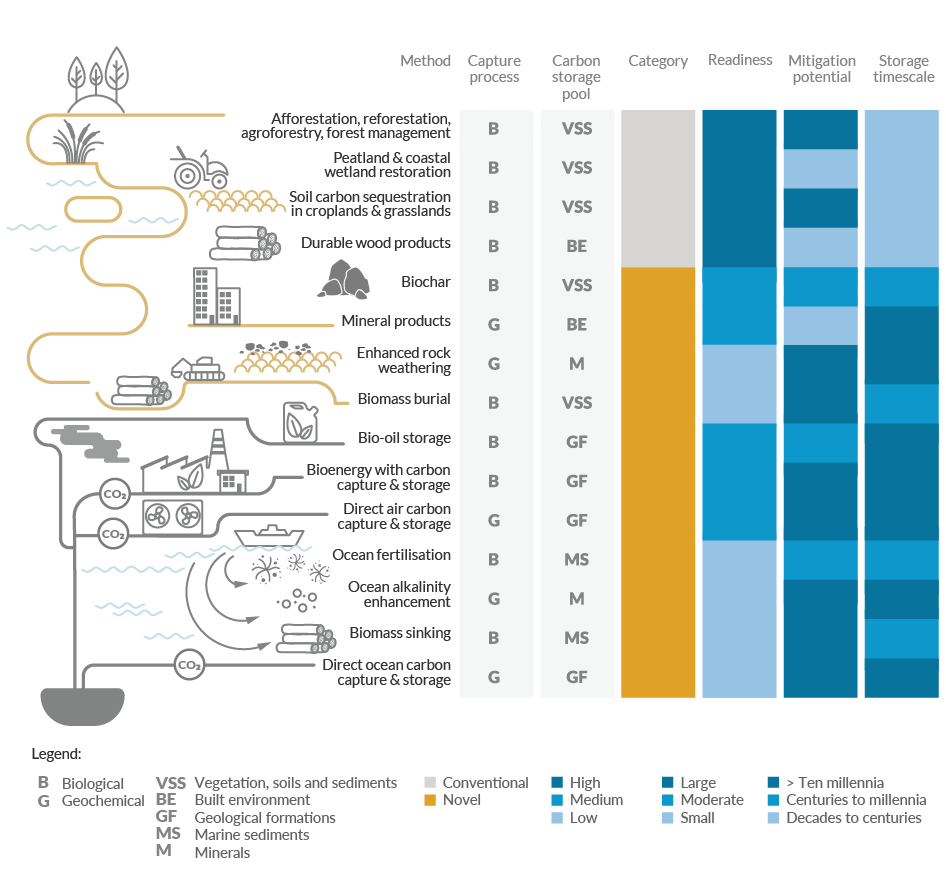The State of Carbon Dioxide Removal
2nd Edition
Carbon dioxide removal (CDR) is human activity that captures CO₂ from the atmosphere and stores it for decades to millennia. Alongside rapidly reducing greenhouse gas emissions, the scaling up of novel CDR and the expansion of land-based CDR are urgent priorities if we are to meet the temperature goal of the Paris Agreement.
There are many CDR methods, which cover a variety of ways to capture and store CO₂. These methods have different levels of readiness, potential and durability. Each method has sustainability risks that could limit its long-term deployment.
Download this figure (PDF)
The State of CDR reports are intended to regularly inform researchers, policymakers and practitioners on the state of progress, by systematically collecting and analysing the vast amount of data and developments in many parts of the world.
The second edition continues the assessment of CDR development, expanding geographical coverage and including new topics such as voluntary markets and monitoring, reporting and verification.
Starting with Edition 2, authors of the report have compiled data on a number of Key Indicators of the State of CDR. These indicators showcase the current state of play, direction of travel, and benchmarks for future CDR needs consistent with sustainably limiting temperature increase in line with the Paris Agreement. The data behind these indicators will be freely available via the newly developed State of CDR data portal.
The State of Carbon Dioxide Removal Edition 2 identified a subset of scenarios that can be considered “more sustainable”. Across this group of scenarios, the central range of CDR deployment is 7 to 9 GtCO₂ per year in 2050.
Around 2 GtCO₂ per year of CDR is taking place already. Almost all of this comes from conventional CDR methods. Novel CDR methods contribute 1.3 million tons (0.0013 Gt) of CO₂ removal per year. That is less than 0.1% of total CDR, but novel methods are growing more rapidly than conventional methods.
Indicators of innovation show that CDR activity is generally intensifying, although with some recent slowdowns. Indicators of research, invention and investment in startup companies show evidence of diversification across CDR methods. However, current deployment and national proposals for future implementation are more concentrated on a few conventional methods. In addition, many modelled mitigation scenarios still represent only a limited set of CDR methods.
There continues to be a gap between the amount of CDR in scenarios that meet the Paris temperature goal and the amount of CDR in national proposals. The CDR gap can be closed by rapidly reducing emissions, scaling up a portfolio of both conventional and novel CDR methods, and explicitly integrating sustainability considerations into CDR policy.

Edition 2

Edition 1




